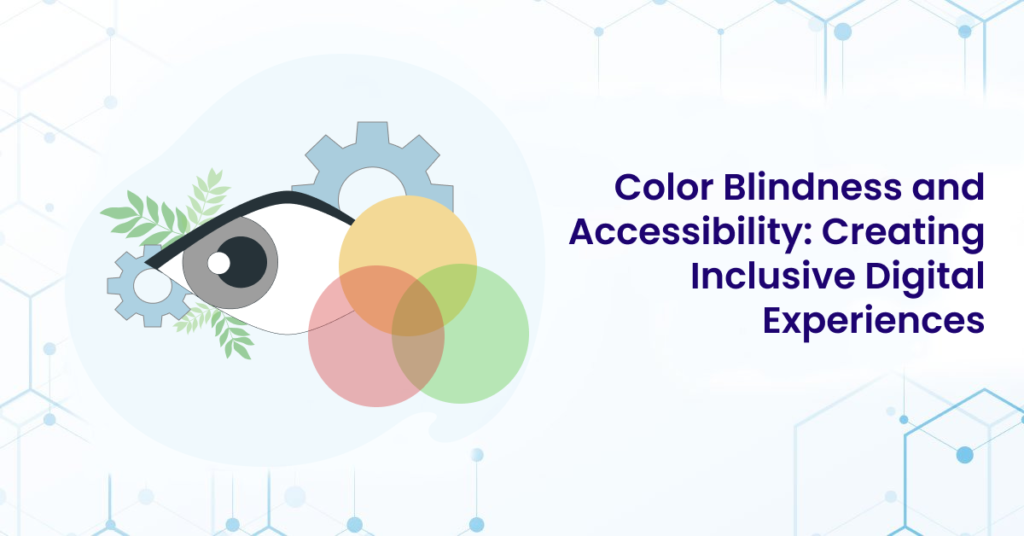Color blindness, or color vision deficiency (CVD), affects around 300 million people globally. Despite its prevalence, many digital interfaces still overlook the needs of color-blind users, leading to significant accessibility challenges. With the increasing emphasis on inclusivity, designers and developers must understand how to create experiences that are accessible to everyone, including those with color blindness.
Understanding Color Blindness
Color blindness typically involves difficulties in distinguishing between specific colors. Color blindness affects approximately 1 in 12 men (8%) and 1 in 200 women (.5%). The most common types of color blindness are:
- Deuteranopia and Deuteranomaly: These are the most common forms of red-green color blindness, where green cones in the eye don’t detect enough green light.
- Protanopia and Protanomaly: Another form of red-green color blindness, where red cones don’t detect enough red light.
- Tritanopia and Tritanomaly: These forms are rarer and involve difficulty in distinguishing between blue and yellow.
People with CVD may see colors differently or not at all, depending on the severity of their condition. For example, someone with protanopia might struggle to distinguish between red and black, while someone with tritanopia may have difficulty with blues and yellows.
Challenges in Digital Design for Color-Blind Users
The design choices you make can significantly impact the user experience for color-blind individuals. Some common challenges include:
- Problematic Color Combinations:
Certain color pairings, such as red and green or blue and purple, are difficult for color-blind users to differentiate. These combinations are often used to indicate important information, such as errors or success messages, which can lead to confusion for those with CVD. - Reliance on Color Alone:
When color is the sole indicator of information, such as in charts, graphs, or buttons, color-blind users may miss out on crucial content. For instance, a red “error” icon may be indistinguishable from a green “success” icon. - Low Contrast Ratios:
Even when color combinations are discernible, low contrast between text and background can make it challenging for color-blind users to read content. WCAG (Web Content Accessibility Guidelines) recommends a minimum contrast ratio of 4.5:1 for normal text to ensure readability for all users.
Curious about your website’s color contrast ratio? Use our free Color Contrast Checker to ensure your design meets accessibility standards.
Accessibility Best Practices for Color Blindness
To create digital experiences that are inclusive of color-blind users, consider the following best practices:
- Use of Descriptive Text: Ensure that important information isn’t conveyed by color alone. For example, instead of using color-coded buttons (“click the red button”), use descriptive text (“click the ‘Cancel’ button”) to ensure clarity for all users.
- Alternative Visual Indicators: Incorporate alternative indicators like text labels, patterns, or icons to supplement color-based information. For instance, adding a checkmark icon next to a green “success” message or a cross icon next to a red “error” message can help users understand the message, regardless of their color perception.
- Simulate Color Blindness: Use tools like Colorblindly, a Chrome extension that simulates various types of color blindness, to test your designs. This allows you to see how your site will appear to color-blind users and identify areas that need improvement.
- Adhere to WCAG Standards: Follow WCAG 2.1 & 2.2 guidelines, which provide recommendations for making web content more accessible, including for color-blind users. These guidelines cover everything from contrast ratios to the use of text and non-text content, ensuring your site is usable by the widest possible audience.
- Offer Customization Options: Allow users to customize their color settings or choose from predefined themes that are designed with color-blind users in mind. This gives users control over their experience and ensures that your site is accessible to everyone.
The Impact of Color Accessibility on User Experience
Implementing these practices not only makes your website more accessible to color-blind users but also improves the overall user experience. Accessible designs are often more intuitive, easier to navigate, and more enjoyable for all users, regardless of their abilities.
Moreover, adhering to international standards like the European Accessibility Act (EAA), the Americans with Disabilities Act (ADA), and WCAG helps ensure that your website is compliant with global accessibility laws. This can protect your business from legal challenges and demonstrate your commitment to inclusivity.
Many leading companies have recognized the importance of color accessibility and have made significant strides in this area. For example, Microsoft has incorporated color-blind-friendly designs across its platforms. Similarly, UpWork and the Royal Bank of Canada have worked with accessibility experts to ensure their digital assets are accessible to users with color blindness.
These companies have seen positive feedback from users and have set a standard for others to follow. By prioritizing accessibility, they’ve not only improved user satisfaction but also expanded their reach to a more diverse audience.
Take Action for Accessibility
Designing for inclusivity is not just about meeting legal requirements but about creating a better experience for all users. By implementing best practices for color accessibility, you can make a meaningful impact on the lives of color-blind individuals and ensure that your digital content is accessible to everyone.
For more information on how to make your website accessible to color-blind users, visit Pivotal Accessibility. Let’s work together to create a more inclusive web for all.

